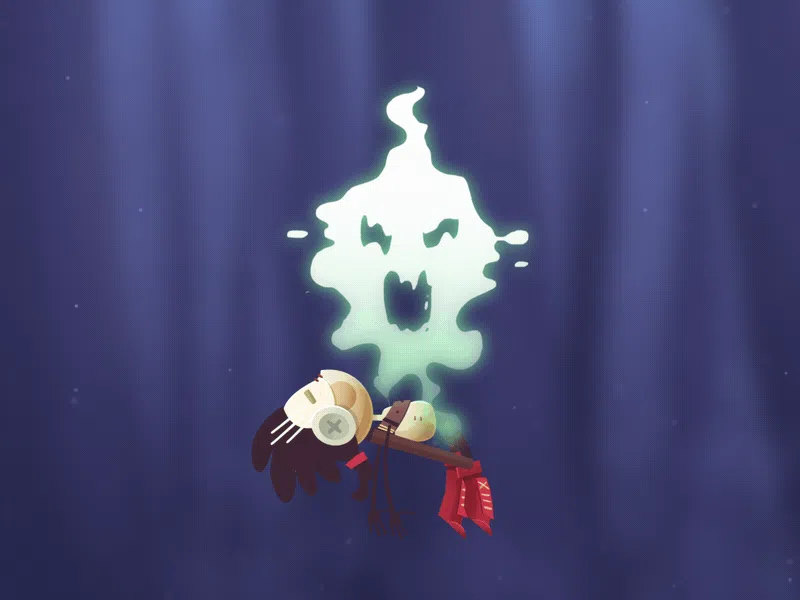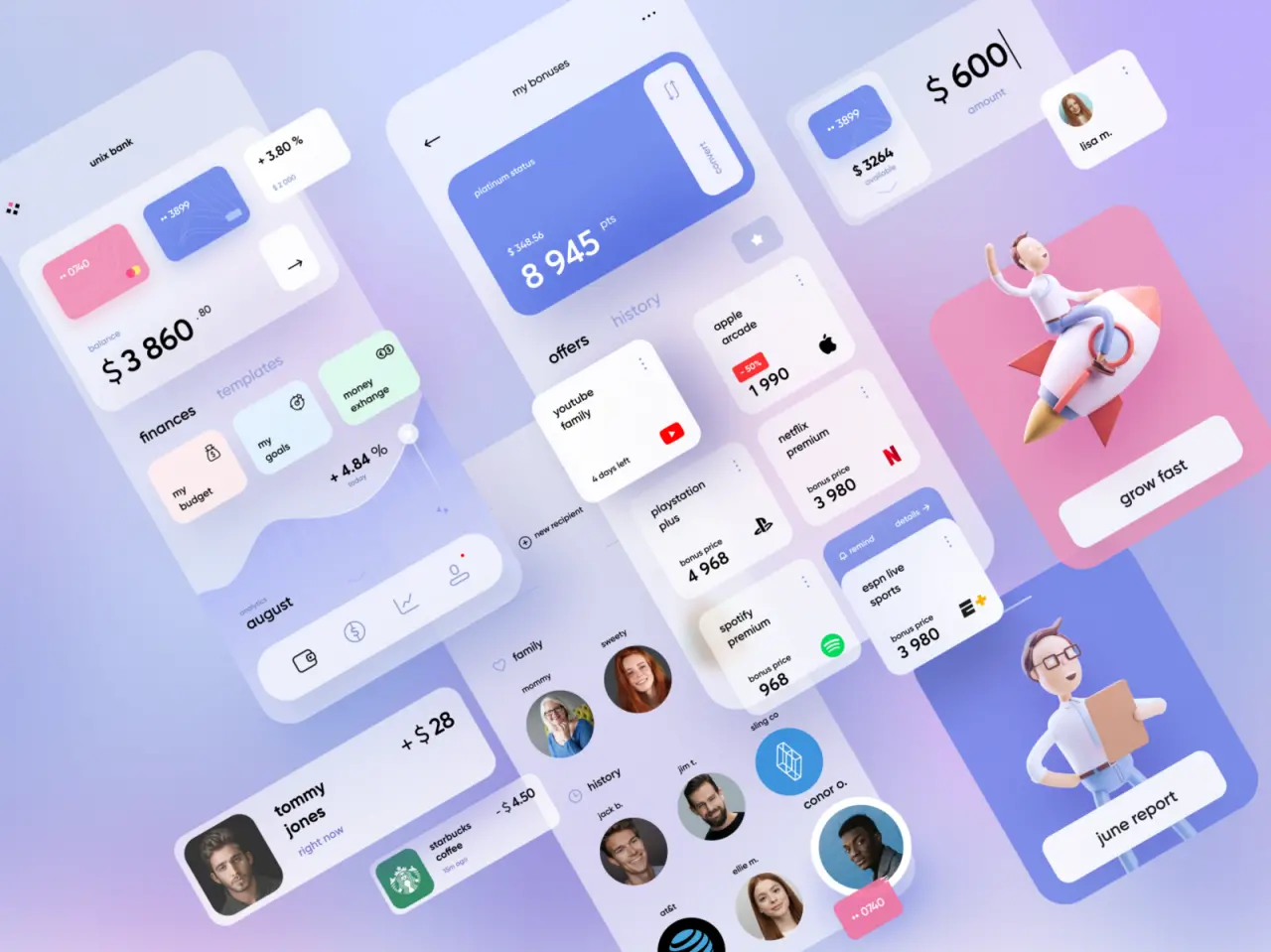10 Things to Consider Before You Use Visual Storytelling in Your Video Marketing
Visual storytelling is a way to tell a story using incredible visuals: motion graphics, digital illustrations, animations, live videos, etc. Various types of media may be added to your story to engage the audience and convey the message. Let’s figure out ten things to consider before you apply storytelling visuals in the most effective ways for your video marketing strategy.

Goals & objectives of storytelling
In regular communication, we tell stories because we want to share them with others, share our experiences through them, find morals in what has happened there, etc. The purpose of video storytelling is to motivate a person to take a targeted action most subtly, in the meantime: subscribe to your newsletter or buy a product, depending on your marketing goal.
You also need to understand that storytelling and advertising may produce different impacts. Stories are remembered by people much better because they evoke specific thoughts and emotions, form a connection with the author or characters of the story, and encourage action. At the same time, ordinary slogans or dry facts often irritate. That is why marketers call storytelling in videos the most powerful tool of the modern age that deprives the audience of annoyance and provides entertainment and fulfillment, achieving marketing goals more naturally.
Storytelling visuals & marketing benefits
Marketers choose this method for various reasons. But the key remains that stories are convincing because they’re alive and form emotional bonds, while facts and statistics do not always, instead leaving the viewer with doubts and more concerns. That is why storytelling is essential to any good marketing campaign, including video marketing.
Visual storytelling marketing involves the use of stories in such a way as to captivate interest and help promote a product or service, increase the loyalty of the target audience, increase the number of subscribers, improve coverage in social networks and so much more in the most easy-going way.
This method can be used in many ways in multiple channels: blog articles, advertisements, ads, video advertising on your YouTube channel, social networks, etc., which makes it a universal visual language. If you want to sell your product through storytelling, create awesome explainer videos, which are an effective tool for data visualization just like infographics, illustrations, or stats, but even faster and, sharper, more eye-catching.
Through visual storytelling examples and using the experience of global brands you refine the closest creative audience and turn it to your loyal adherers. Besides, you may always apply visual storytelling as magnets in marketing funnels of various purposes both standalone and as a part of your advertising mix.
Advanced checklist for your video marketing strategy
So, how to create videos that engage and bring profit as per your marketing goals in this or that case? Before the launch of any creative campaign using video storytelling, begin with:
1. Study your target audience
Study your target audience to know what it likes about the story, use language, terminology, and audience slang, speak at a pace that is comfortable for them, and choose an appropriate tone of voice. Make it clear to the reader or viewer that they may check how your product works anytime or try your services because you know it’s what they need. Your story should also have a measurable goal (for example, the number of registrations, purchases, responses, etc.) and a specific recipient. This is where audience research comes in handy, which you most likely have already done more than once, right?
2. Explore the topic
Work on each topic in depth. Keep your story short and concise, but not fiery. Explore the topic from different angles, and talk about the key things. Tell a story in a way that makes it understandable to the reader or viewer, and evokes emotions.
3. Script your video
Look for exciting and valuable plots for your story. Quality content is the key to success in promoting your business. This also applies to storytelling. Don’t beat other people’s ideas. Come up with a new script ideal for your case.

4. Apply eye-catching visuals
Since this is all about visual storytelling, your next task is to define the visual style and what the universe of your story looks like. The visual always helps the viewer get better absorbed in your story. Pictures enliven the story and make it memorable. As illustrations, you may choose beautiful photos, infographics, diagrams, animations, or sometimes popular memes. Use large images and raw backstage videos to enhance your presence. Try the user to cross the line between the story and their world.
Today’s hottest content is interactive, from swipes and clicks on links to polls, video challenges, and AR selfie filters. All this works better than just a picture and text or animated texts and motion graphics.
5. Come up with the catchy title
Work out the title. Remember that the title should reflect the essence of the video, so you do not need to use a title that does not fit your story in any way. The best headline is the one that draws the viewers into the story and assumes they stay to the end.
6. Consider main characters
Often video characters are personages that your audience may relate to and recognize themselves in. The user as part of the story is a great idea. Leave the users with the choice and voice more often to encourage user-generated content. Whether you like it or not, your customers (like many of us) think in stories. In the story’s center, there may be a cartoon character, doodles, a group of people, animated objects, etc. However, if you want your potential customers to remember your visual story, you need to bring it as close as possible to the world of users, making them participants.
7. Set the conflict
Put the heroes in a situation that would change them. It may be a conflict situation, a lesson in how a character overcomes adversity. If there is no conflict in the story, it will most likely be a lousy story without catharsis. The viewers should find themselves in the characters, and the story will evoke emotions and inspiration in them.

8. Set the mood
Add intrigue or a hook, and set the mood. As long as there is uncertainty in the story, it will be interesting. The viewer or listener should be in suspense from the first to the last minute of watching the story. Add comparison, and metaphors to the story or apply other stylistic and visual devices to achieve necessary effects so that the user has the right associations.
9. Build a clear structure
Often visual storytelling starts with a mood board. Animated video design or a short film may start from a storyboard. Anyway, build a clear structure of the components. Be sure to consider the sequence of events. Ensure that the material is varied and the story thread is not lost. Talk about the product in such a way that this story influences a viewer and changes life for the better, etc. Use a digital or physical mood board to do this, metaphoric grouping pictures to describe the audience’s features, tastes, values, problems, fears, weaknesses, etc. Handy tools are regular whiteboards, Pinterest boards, Crello collages, etc.

Also, feel free to discover What Does An Animation Artist Do?
10. Keep it emotional
Most purchases are made on emotions. It can be curiosity, greed, pleasure, etc. Tell the story in such a way that to get an emotional response and order placement from the potential client. Also, note that visual storytelling is ineffective if you only need immediate direct sales. It’s the perfect PR tool instead.
Conclusion
Now that you’re sure you’ve checked your video marketing list with all the essential points, you may consider using your video explainers to get the best results. It’s high time to admit the power of visual storytelling in content marketing and start your video strategy well thought. Great visual storytelling should feature a character, may narrate the story that includes a conflict, and offer solutions to improve life, setting the goal of communication and searching for more significant ideas. So, it is worth investing in great visuals like explainer videos, immersive storytelling, trying a multi-channel approach, and the ability to generate user-generated content to make the best out of your video marketing. And so much more!

No matter what you choose, feel free to contact & consult professional video designers, ask them for great examples, or any other help, and organize a better quality workflow for your business video production & marketing.


